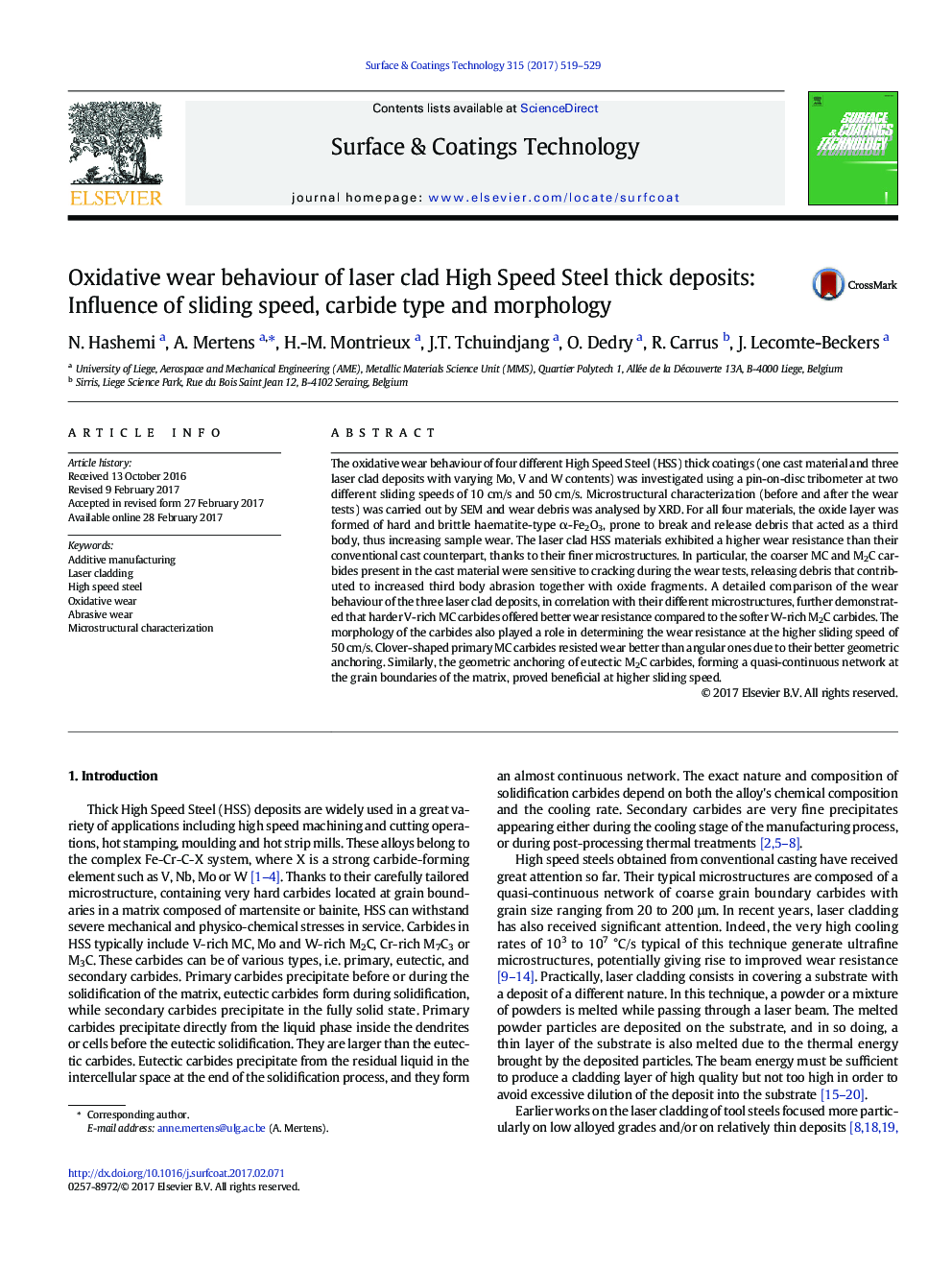| کد مقاله | کد نشریه | سال انتشار | مقاله انگلیسی | نسخه تمام متن |
|---|---|---|---|---|
| 5464708 | 1517567 | 2017 | 11 صفحه PDF | دانلود رایگان |
- The oxidative wear of 4 HSS grades was investigated using a pin-on-disc tribometer.
- Debris of hard haematite-type oxide caused third body abrasion and increased wear.
- Laser clad HSS resisted wear better due to their finer microstructure.
- Harder V-rich MC led to a better wear resistance compared to the softer W-rich M2C.
- Good anchoring of clover-shaped MC and of M2C was beneficial at high sliding speed.
The oxidative wear behaviour of four different High Speed Steel (HSS) thick coatings (one cast material and three laser clad deposits with varying Mo, V and W contents) was investigated using a pin-on-disc tribometer at two different sliding speeds of 10 cm/s and 50 cm/s. Microstructural characterization (before and after the wear tests) was carried out by SEM and wear debris was analysed by XRD. For all four materials, the oxide layer was formed of hard and brittle haematite-type α-Fe2O3, prone to break and release debris that acted as a third body, thus increasing sample wear. The laser clad HSS materials exhibited a higher wear resistance than their conventional cast counterpart, thanks to their finer microstructures. In particular, the coarser MC and M2C carbides present in the cast material were sensitive to cracking during the wear tests, releasing debris that contributed to increased third body abrasion together with oxide fragments. A detailed comparison of the wear behaviour of the three laser clad deposits, in correlation with their different microstructures, further demonstrated that harder V-rich MC carbides offered better wear resistance compared to the softer W-rich M2C carbides. The morphology of the carbides also played a role in determining the wear resistance at the higher sliding speed of 50 cm/s. Clover-shaped primary MC carbides resisted wear better than angular ones due to their better geometric anchoring. Similarly, the geometric anchoring of eutectic M2C carbides, forming a quasi-continuous network at the grain boundaries of the matrix, proved beneficial at higher sliding speed.
146
Journal: Surface and Coatings Technology - Volume 315, 15 April 2017, Pages 519-529
